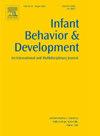Diverse language experiences in deaf infants and in hearing infants with deaf parents: 25 years of improved understanding and recognition
IF 2
3区 心理学
Q3 PSYCHOLOGY, DEVELOPMENTAL
引用次数: 0
Abstract
Most infants first encounter language through the words spoken in their environment. However, for a smaller number of deaf and hearing infants, language can be presented in different sensory modalities, including a visual-manual signed language (e.g. American Sign Language - ASL or British Sign Language – BSL) and an auditory-oral spoken language (e.g. English). Language acquisition trajectories for children exposed to both signed and spoken language are less understood and less recognised. For hearing children with deaf parents using sign language, recent research suggests that they develop a special case of bilingualism – bimodal bilingualism - which offers some advantages in early communication skills. In deaf children, it has now been clearly demonstrated that early exposure to sign language brings about gains in both the spoken and signed modalities, suggesting an amodal impact of language experience in infancy. The present review presents progress made in the last 25 years in understanding the impact of sign language experience in infancy. It will discuss potential neurocognitive mechanisms by which learning gains in one language modality can be transferred to the other language modality. The research data collected so far leave several questions unanswered and suggest many avenues for future research.
聋人婴儿和聋人父母的听障婴儿的不同语言体验:25年来理解和识别的提高
大多数婴儿第一次接触语言是通过他们所处环境中的话语。然而,对于少数失聪和听力正常的婴儿,语言可以以不同的感官形式呈现,包括视觉-手动手语(如美国手语- ASL或英国手语- BSL)和听觉-口语(如英语)。同时接触手语和口语的儿童的语言习得轨迹很少被理解和认识。最近的研究表明,对于聋哑父母使用手语的听力正常的孩子来说,他们会发展出一种特殊的双语情况——双模双语——这在早期沟通技巧上有一些优势。在失聪儿童中,现在已经清楚地表明,早期接触手语会在口语和手语方面都有所收获,这表明婴儿时期的语言经验对他们的情绪有影响。本综述介绍了过去25年来在理解婴儿手语经验的影响方面取得的进展。它将讨论潜在的神经认知机制,通过这种机制,一种语言模态的学习成果可以转移到另一种语言模态。到目前为止收集的研究数据留下了几个未解决的问题,并为未来的研究提出了许多途径。
本文章由计算机程序翻译,如有差异,请以英文原文为准。
求助全文
约1分钟内获得全文
求助全文
来源期刊

Infant Behavior & Development
PSYCHOLOGY, DEVELOPMENTAL-
CiteScore
4.10
自引率
4.80%
发文量
94
期刊介绍:
Infant Behavior & Development publishes empirical (fundamental and clinical), theoretical, methodological and review papers. Brief reports dealing with behavioral development during infancy (up to 3 years) will also be considered. Papers of an inter- and multidisciplinary nature, for example neuroscience, non-linear dynamics and modelling approaches, are particularly encouraged. Areas covered by the journal include cognitive development, emotional development, perception, perception-action coupling, motor development and socialisation.
 求助内容:
求助内容: 应助结果提醒方式:
应助结果提醒方式:


